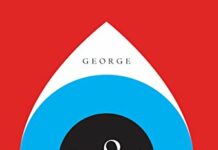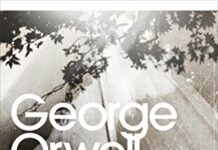
Ebook Info
- Published: 2009
- Number of pages: 417 pages
- Format: EPUB
- File Size: 0.00 MB
- Authors: George Orwell
Description
The essential collection of critical essays from a twentieth-century master and author of 1984.As a critic, George Orwell cast a wide net. Equally at home discussing Charles Dickens and Charlie Chaplin, he moved back and forth across the porous borders between essay and journalism, high art and low. A frequent commentator on literature, language, film, and drama throughout his career, Orwell turned increasingly to the critical essay in the 1940s, when his most important experiences were behind him and some of his most incisive writing lay ahead. All Art Is Propaganda follows Orwell as he demonstrates in piece after piece how intent analysis of a work or body of work gives rise to trenchant aesthetic and philosophical commentary. With masterpieces such as “Politics and the English Language” and “Rudyard Kipling” and gems such as “Good Bad Books,” here is an unrivaled education in, as George Packer puts it, “how to be interesting, line after line.”With an Introduction from Keith Gessen.
User’s Reviews
Reviews from Amazon users which were colected at the time this book was published on the website:
⭐do not buy a physical print from here. HOW DID THIS PASS THROUGH QUALITY CONTROL!!!!! I am so disappointed in the physical book i received. i have no idea how they managed to mess up this print! everything is crooked and the book is cut into a trapezoid shape which makes no sense! I was so looking forward to start reading this book but now i have to wait until i return this one and try to find a better print elsewhere.
⭐Mariner does Orwell no honor. Cheap newsprint. Book manufacturing quality is more important now than ever before. We buy printed books instead of free ebooks because we want to save them in our libraries. All digital data is going to be lost. The software to read it is going to be changed. (Try watching a laserdisc from the 1980s.) If you are a bookbinder, use quality paper instead of newsprint. Use solid glues and high quality manufacturing to make your product last 100 years. Shame on you. This is Orwell! Not some softcore potboiler.
⭐Let me be clear — Orwell’s Essays = 5 stars, but when an editor starts picking and choosing, the pieces left out and included much become a huge part of the story, and that’s where my actually 2 1/2 star review is based: selection. I am being particularly hard on this two-volume set that is obviously more than an “intro” that should have gone the extra mile and found more gems rather than just reprinting essays easily found in every other collection and many textbooks as well as online for free. Some included essays have no place here – given quality and the supposed themes.I bought both books of this set somewhat blindly since I had higher hopes for two themed and edited books. I was wrong. As with almost every “selected xx” situation, mediocre essays were included and so many more worthy pieces were not. I’d put the books down remembering another title and scour the internet trying to figure out how to read “the one I’m missing right now…” In a two-book series, one with so much promise, I found myself driven to distraction by what was missing, especially from the earlier work, and wondering why on earth others were given what was apparently prime real estate. The combination pushed things beyond the pale.All of that could have been solved had Amazon, another bookstore, the publisher or editor bothered to list the table of contents somewhere. Perhaps they sell more with hopeful blind purchasers like me – someone who already owned 90% of what came between these four covers, albeit in various folders, books, booklets and every other conceivable way. Given the COMPLETE essays only have two more books, and they also include his letters and “journalism,” the paucity here is unforgivable at times – particularly in this critical volume.I may come back to this set in future and list the contents so others don’t go through the same drama of scrolling all over the web whilst holding a list in one hand and 2 open books on the floor. At the end of the day, this set is lovely to look at, but they are not the best Orwell collection, and we really are still without a currently published and easily read full set. For some it might be worth it to bite the bullet and spend a great deal on now out of print “The Collected Essays, Journalism and Letters of George Orwell” – the four book series mentioned above – or have less ease in reading but spend far less money and get the complete hardback. That’s a personal taste and financial choice. Someone with the means to put together a nice multi-volume paperback complete set could be a blessing to the literary world.Without trying Orwell fans will end up with countless copies of about 25 essays, some of which are also found in his longer works, some which are just not as compelling when compared with wonderful but lesser-known unincluded pieces that would flesh out collections, particularly a two-volume themed series. I found myself wondering why one thing was included over another to the point of distraction.
⭐This collection of essays by George Orwell is part of a two-volume compilation. (The other volume is called Facing Unpleasant Facts: Narrative Essays.) In a foreword to this volume, George Packer explains that the focus of All Art Is Propaganda is Orwell’s use of the essay genre as a means of holding something up for critical scrutiny. The theme of the volume, art as propaganda or as a tool for persuasion, recurs throughout these essays. We often think of propaganda in its perjorative sense; something used by the powerful to cajole the unthinking masses into actions that they would not normally undertake on their own. But for Orwell, “propaganda” is a neutral term. Any writing or other art that attempts to persuade, for good or ill, is propaganda.Orwell’s essay on Charles Dickens introduces this theme: “But every writer, especially every novelist, has a ‘message,’ whether he admits it or not, and the minutest details of his work are influenced by it. All art is propaganda.” (p. 47) That the Dickens message is not always clear is illustrated by the fact that people of many conflicting political leanings have, as Orwell puts it, “stolen” Dickens. Both Marxists and Catholics have latched onto him as a spokesman. This essay seeks to understand the real Dickens.Some other literary heavyweights get a thorough Orwell examination in ths volume: Henry Miller, Shakespeare, Kipling, T.S. Eliot, and Leo Tolstoy. Tolstoy is known to have rejected Shakespeare as not even “an average author.” Orwell finds the root of Tolstoy’s displeasure with the Bard to be “the quarrel between the religious and the humanist attitudes toward life.” (p. 326) He sees in Tolstoy a writer whose religious orthodoxy makes it impossible to appreciate the sensuality and joy in living that we find in Shakespeare.But Orwell’s critical eye is not only focused on the literary greats. “Boys’ Weeklies” takes a look at the amazing popularity of twopenny weeklies aimed a boys (sometimes called “penny dreadfuls”). These too, he finds, have a propagandistic motive. It is a motive more sinister than one might have suspected until you look into who owned and published these weeklies.In “Raffles and Miss Blandish,” Orwell examines another popular genre: crime fiction. He decries their “vulgarisation of ideas,” “fearful intellectual sadism,” and “power-worship,” and he wonders what these trends say about British society.Orwell does not limit himself to the art of writing. In “The Art of Donald McGill,” he examines the post card drawings of this popular artist. He looks at the obscenity of the post cards and wonders what it says about marriage and the stability of society. “Benefit of Clergy” is an analysis of the work of Salvador Dali. He sees in Dali’s work “a direct, unmistakable assault on sanity and decency,” and concludes that “a society in which they [artists like Dali] can flourish has something wrong with it” (p. 215).Walt Whitman, Charlie Chaplin, Uncle Tom’s Cabin, Gulliver’s Travels, the Catholic Church, Soviet Russia, Gandhi, H. G. Wells, Hitler, Voltaire, Graham Greene, India and British colonialism, fascism, communism, and democracy, and, of course, boys’ magazines and detective stories. Orwell’s range of topics is seemingly endless. He was a man who hated orthodoxy and cant, who thought deeply about the act of writing and how the written word affected people, and who then wrote about all these things clearly, simply, and powerfully.
⭐Orwell ist king! er sieht die Dinge vor seiner Zeit, auch stilistisch heute noch vorbildlich. Packers Intro ist wohltuend ausgewogen, er lobt Orwell nicht nur, sondern gibt den kritischen Einordner. Good Bad Books sticht für mich heraus, aber alle Essays haben ihren grossen Wert. Super Lektüre für kritische Geister.
⭐
⭐Não é o melhor livro dele, e muitas vezes a análise aprofundada de certos textos se torna massante se você não os conhece.Um ponto bem interessante é perceber a evolução política do escritor, saindo de um defensor ferrenho do comunismo, para um dos maiores críticos do regime soviético, o que me levou a entender o de onde surgiu outras obras como 1984 e Animal Farm.
⭐
⭐OK BOOK – NOTHING IS NEW – ESPECIALLY SPIN DOCTORS IN POLITICS ESSAY – ORWELL SAW IT ALL AHEAD OF TIME
Keywords
Free Download All Art Is Propaganda: Critical Essays in EPUB format
All Art Is Propaganda: Critical Essays EPUB Free Download
Download All Art Is Propaganda: Critical Essays 2009 EPUB Free
All Art Is Propaganda: Critical Essays 2009 EPUB Free Download
Download All Art Is Propaganda: Critical Essays EPUB
Free Download Ebook All Art Is Propaganda: Critical Essays




